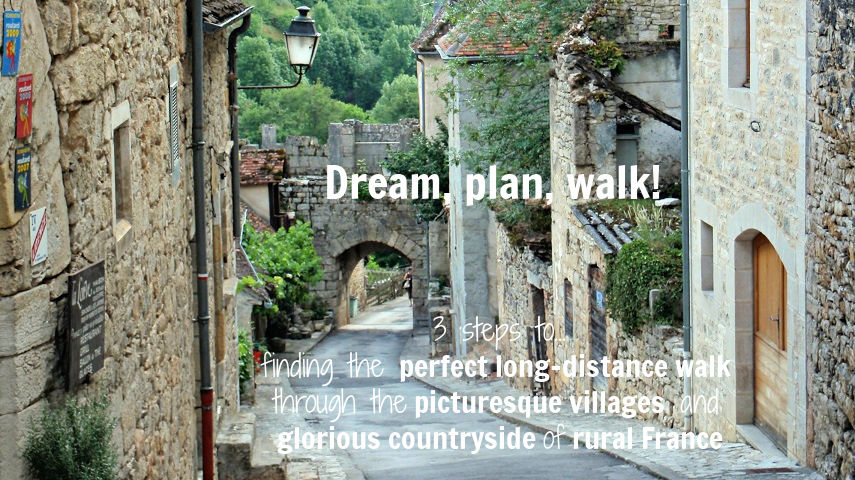
(Published December 2013, last updated June 2025)
Legend has it that, following his victory over the Visigoths at the Battle of Vouillé in the sixth century, the Catholic King Clovis I had a vision—to build a monastery for a thousand monks, on the land where the Tarn and Garonne Rivers meet in southern France.
Although this story has been largely discredited, Abbaye de Saint-Pierre, once the heart of a large monastery complex in the centre of Moissac, is a magnificent example of Romanesque architecture and has been a major stop for pilgrims along the Chemin de Saint-Jacques since the tenth century.
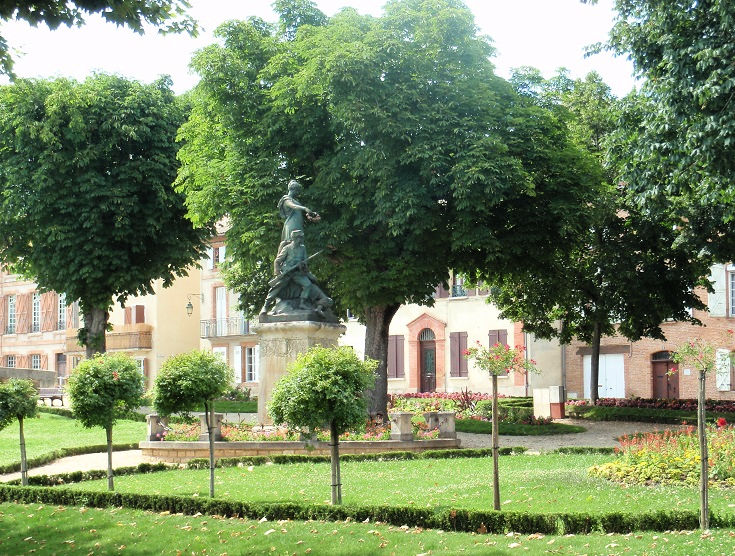
War memorial in Moissac
Many walkers travelling along the Chemin de Saint-Jacques take a rest day in Cahors. If you are following my suggested itinerary, you’ll arrive in Moissac three days later—much too soon to be considering another rest day! But if you are ready for a break, Moissac is an ideal choice.
When you arrive in town, call into the Tourist Office which is located next to the abbey. Ask for a map of the town (Plan de Moissac), which also shows two walking circuits around Moissac, and will be useful if you have time for some wider exploring.
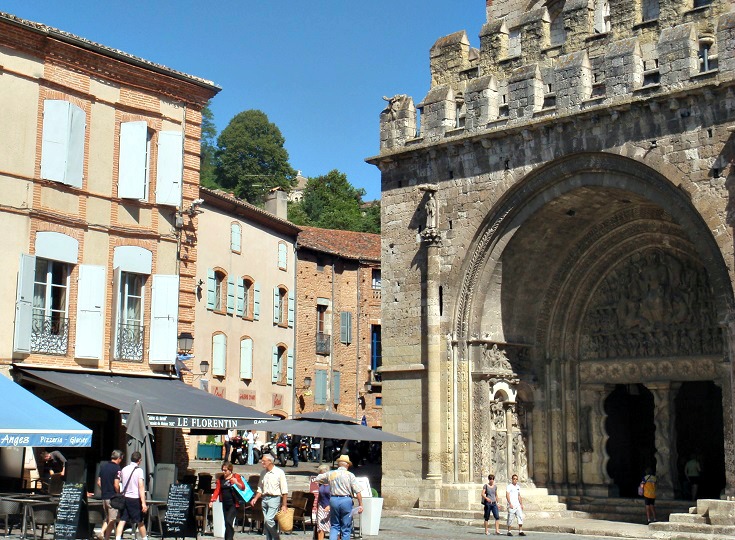
No matter how much time you have available, make sure you visit the abbey and cloister, which are open to the public every day (hours vary depending on the season). There is a lot to see here so, if possible, allow yourself an hour or two to explore. Guided visits (en français) or audio guides (in many languages) are also available to give you a deeper understanding of the site’s architecture and carvings.
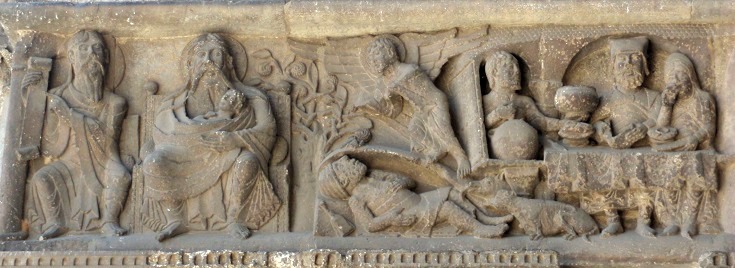
Construction of the abbey has been attributed to Clovis II, who ruled in the middle of the seventh century. The southern door is surrounded by elaborate carvings, including a tympanum depicting the Apocalypse, which was carved between 1115 and 1130.
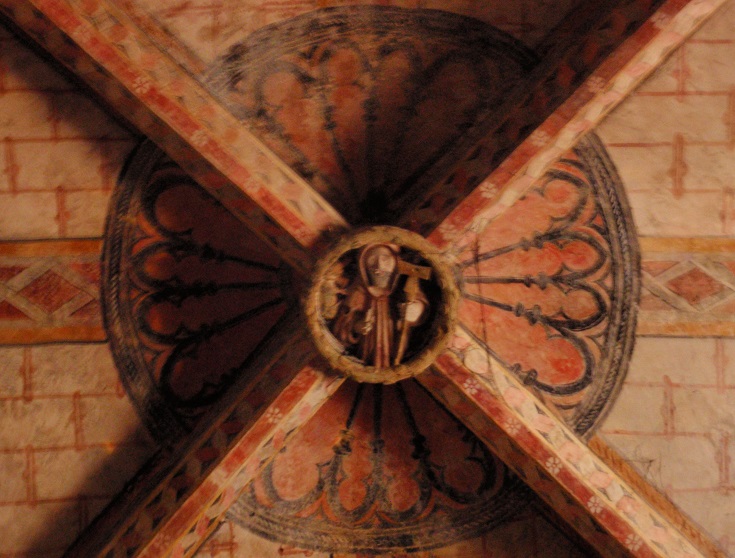
Decorative painting of the ceiling in the abbey church
Inside, the walls are painted in shades of yellow, terracotta and blue and several small chapels display beautifully painted statues and sculptures of Jesus, the saints and disciples.
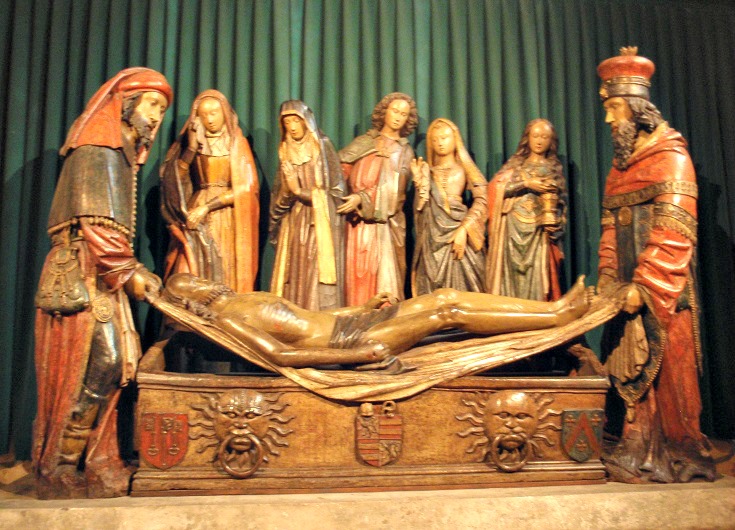
Over the centuries, the church has been restored and enlarged several times—as evidenced by the mixture of architectural styles and stone and brick work on the façade.
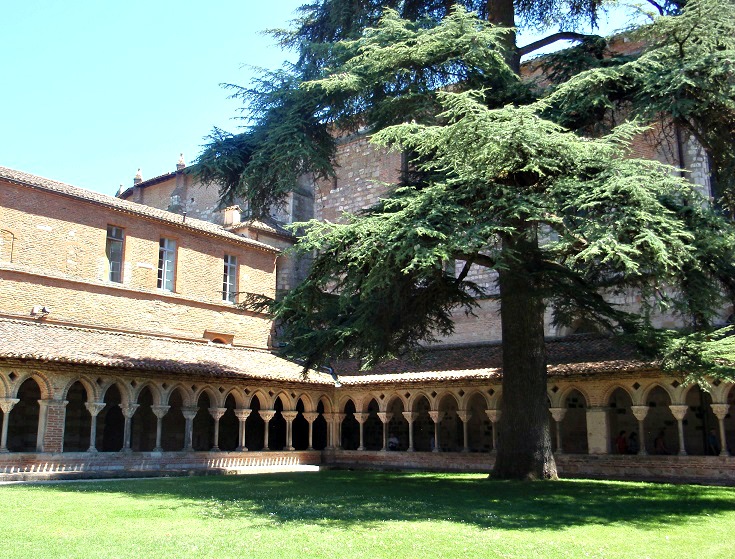
The adjoining cloister was completed in 1100 and offers an oasis of calm—despite the many visitors (and the constant stream of wedding parties on a Saturday afternoon!).
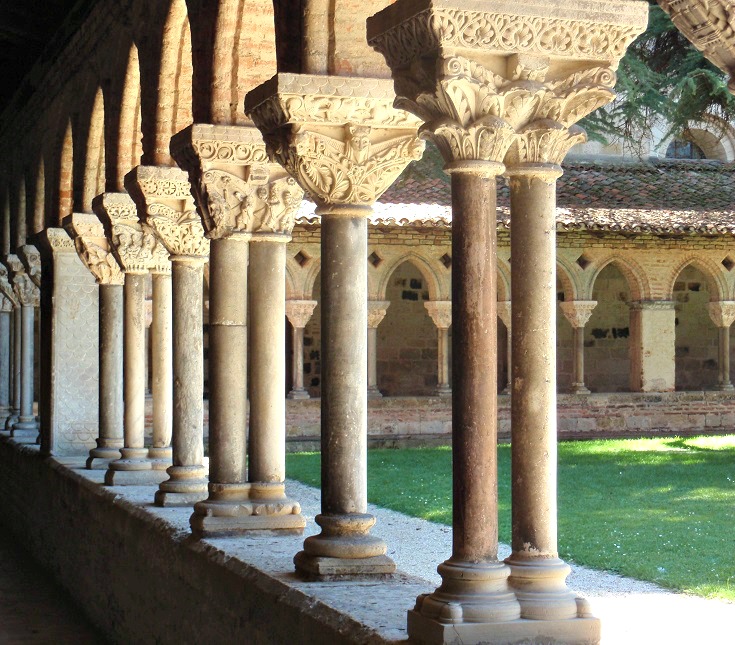
Seventy-six capitals, mounted on alternating single and double columns, line the cloister and depict the lives of saints and martyrs as well as stories from the Old and New Testaments. These delicate, and sometimes macabre, carvings are believed to be the oldest surviving capitals in the world.
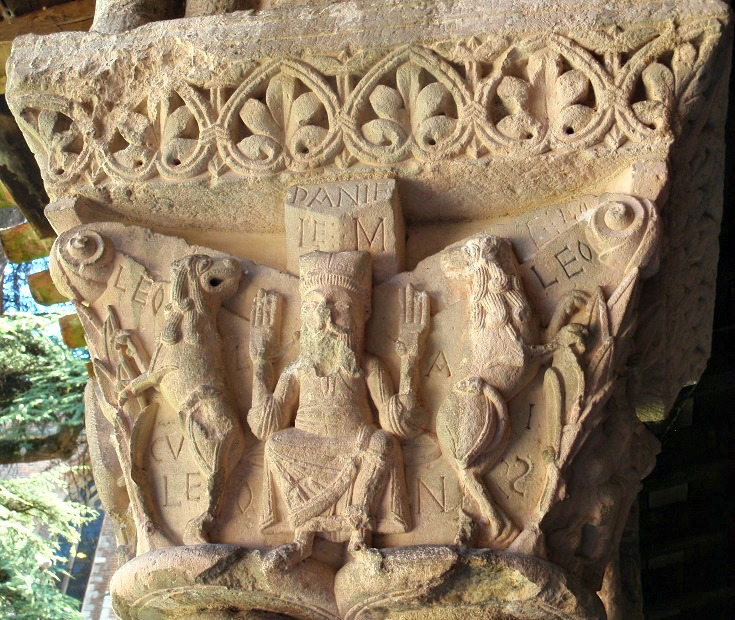
In 1930, Moissac was inundated by a flood which killed 120 of the 7,400 residents and left 6,000 homeless. Donations to assist with the reconstruction poured in from Paris and Morocco and many buildings throughout the town has a strong art deco influence. A marked trail on the brochure À la découverte de Moissac (available from the Tourist Office) leads you past several beautiful examples of art deco architecture as well as other sites of historical significance.
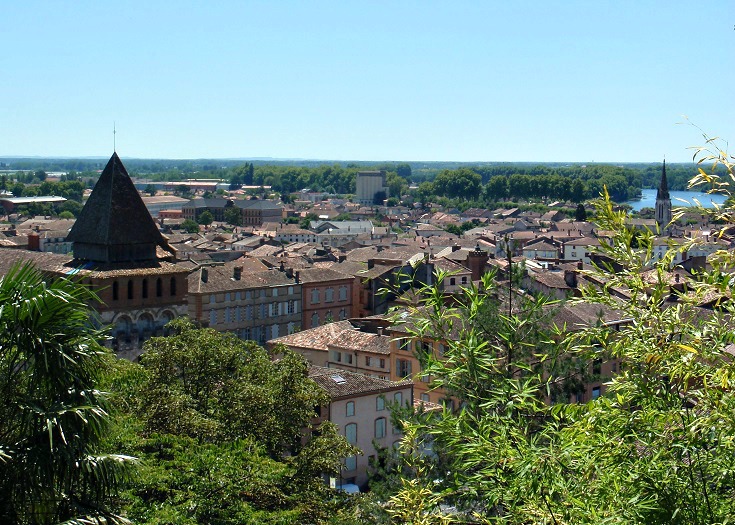
If you have time to explore the town a little more, follow the road beyond the railway to the top of the hill (green circuit on Plan R/V Moissac—Terre des Confluences). Here you’ll find the Carmelite Convent, which shelters up to eighty walkers each night and offers spectacular views from the grounds over the rooftops of Moissac.
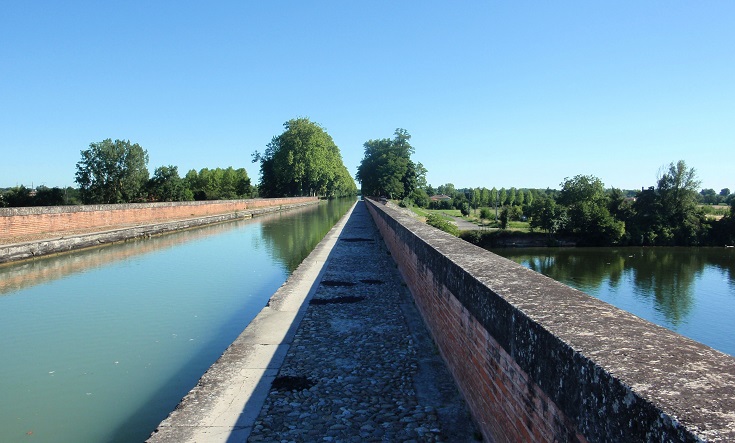
Canal bridge over the Garonne River
If you have an hour to spare, a short walk (following the green circuit on Plan R/V Moissac—Terre des Confluences) will take you along the Canal lateral à la Garonne, which cuts through the centre of town and forms a bridge over the Garonne River as it heads south-east towards Toulouse.
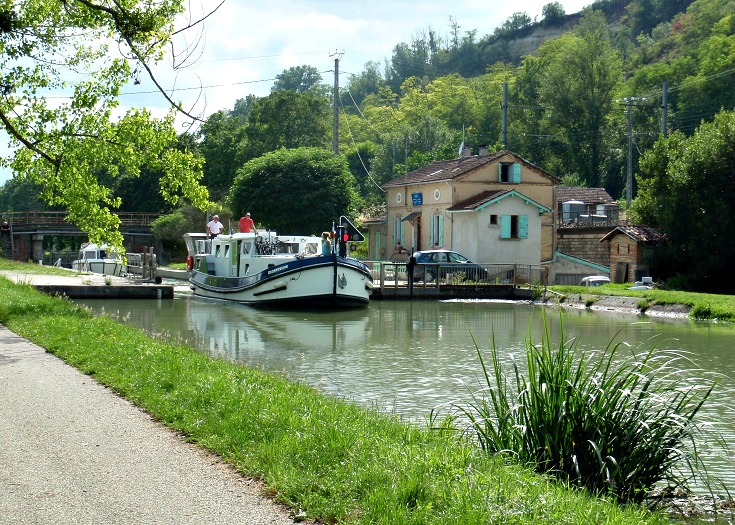
From Moissac, the Chemin de Saint-Jacques follows the Canal latéral à la Garonne in a westerly direction for three kilometres (two miles) before climbing the ridge to the village of Boudou. The lookout offers spectacular views, extending over the Garonne River to the cultivated fields beyond.
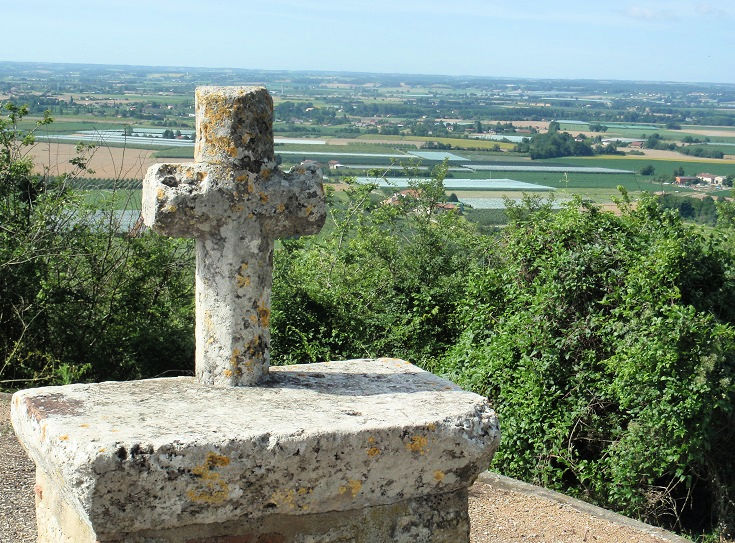
Views from the lookout in Boudou
From Boudou, the path slowly descends the ridge, rejoining the canal at Malause but, if you prefer to avoid the climb (and reduce the walk by more than one hour), you can choose to follow the canal from Moissac as far as Pommevic.

Canal latéral à la Garonne between Moissac and Malause
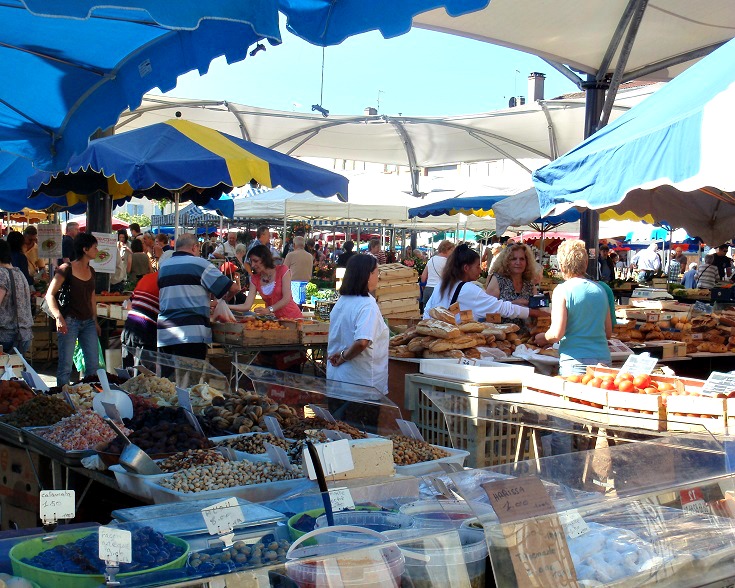
Saturday morning market in Moissac
FAST FACTS
Which long-distance walk in France visits Moissac?
Chemin de Saint-Jacques du-Puy (Stage 4: Cahors to Eauze)
Look inside the CHEMIN DE SAINT-JACQUES (PDF) guidebook
Where is Moissac, France? Find it on Google maps
Moissac is located 413.8 kilometres (258.6 miles) along the traditional Chemin de Saint-Jacques path.
My preferred route follows the variante from Figeac through the Célé valley which increases the distance to 434.7 kilometres (271.7 miles)—a relaxed 25-day walk from the starting point of Le Puy-en-Velay, but if you are pressed for time, Moissac can be reached quite comfortably in 19 days without sacrificing any of the highlights.
Click through to find my suggested itinerary for all five stages of the walk or click through onto each of the five stages to find faster itineraries.
If you prefer to set your own agenda, I share the steps I take to plan my itinerary on any long-distance walk (using the Chemin de Stevenson as a case study).
Transport options to and from Moissac
Train line Bordeaux—Agen—Toulouse connects Moissac to Bordeaux, Agen, Castelsarrasin, Montauban and Toulouse.
A transfer in Montauban or Toulouse to the Brive—Cahors—Toulouse train line will take you back to Cahors.
A transfer in Agen to Gers bus line 932 Auch—Lectoure—Agen will take you further along the chemin to Lectoure.
A transfer in Agen to Gers bus line 95 Condom—Agen will take you further along the chemin to Condom.
Tarn-et-Garonne bus line 801 Montauban—Moissac—Lamagistère connects Moissac to Malause and Pommevic, reducing the day’s walk to Auvillar.
Tarn-et-Garonne bus line 807 Lauzerte—Moissac—Castelsarrasin operates on school days, connecting Lauzerte to Moissac in the morning and making the return trip in the early afternoon (Wednesdays) or late afternoon (other days).
Tourist Office in Moissac
You’ll find the Tourist Office next to Abbaye Saint-Pierre. Opening hours are listed on the Tourist Office website.
Ask for a map of the town (Plan R/V Moissac—Terre des Confluences), which shows two walking circuits around Moissac, and will be useful if you have time for some wider exploring.
Accommodation in Moissac
There are plenty of accommodation options in Moissac and you’ll have no trouble finding something to suit your taste and budget.
Although it is not a common choice for those walking the Chemin de Saint-Jacques (there were no other walkers), I can personally recommend Le Moulin de Moissac which was one of the nicest and best value hotels I have stayed in. Our room offered beautiful views over the river and was a ten-minute walk from the abbey in the centre of town. Other options include:
Hotels
Le Moulin de Moissac
L’Armateur
Le Chapon Fin
Le Pont Napoleon
Chambre d’hôtes
Ultreïa (5 rooms, 10—15 people)
L’Arche de Moissac (5 rooms, 10 people)
La Maison Lydia (4 rooms, 10 people)
La Bonheurie (3 rooms, 9 people)
La Fuite en Égypte (3 rooms, 7 people)
Chez Dan et Véro (3 rooms, 6 people)
Chez Provensal (2 rooms, 4 people)
Le Jardin Suspendu (2 rooms, 4 people)
La Maison de Laujol (2 rooms, 4 people)
Gîtes
L’Ancien Carmel (80 people)
Comme un Air du Voyage (24 people)
Maison Aliénor (5 rooms, 15 people)
L’Auberge des Chemins (5 rooms, 15 people)
Les Étoiles (5 rooms, 13 people)
Ultreïa (3 rooms, 12 people)
Le Bon Camino (10 people)
La Coquille (4 rooms, 8 people)
La Petite Lumière (2 rooms, 8 people)
Le Port Canal (3 rooms, 6 people)
Appartement aux Palmiers (4 rooms, 13 people)
Campground
Camping de l’Île du Bidounet
How to book accommodation in French
Where to eat in Moissac
From Place Roger Delthil in front of the abbey to Place des Récollets, Rue de la République is lined with cafés and restaurants and there are many more scattered beyond this central section of town. If you are staying at le Moulin de Moissac, I can thoroughly recommend the hotel restaurant which serves a variety of delicious dinners and superb desserts each night.
Moissac also boasts several supermarkets and specialty produce stores but if you are in town on a Saturday or Sunday morning, you’ll find the fresh food market well stocked with local produce—perfect for a picnic lunch.
Practical tips for long-distance walking—preparation, packing and avoiding blisters
Purchase the Chemin de Saint-Jacques (PDF) guidebooks
Purchase five guidebooks covering Le Puy-en-Velay to Saint-Jean-Pied-de-Port
